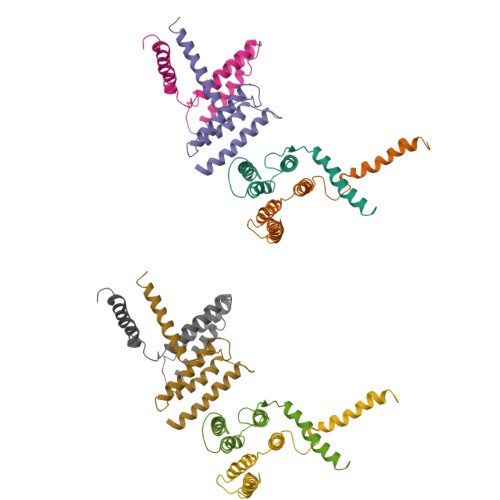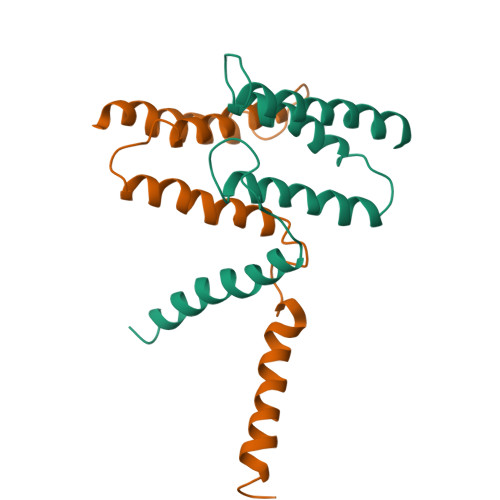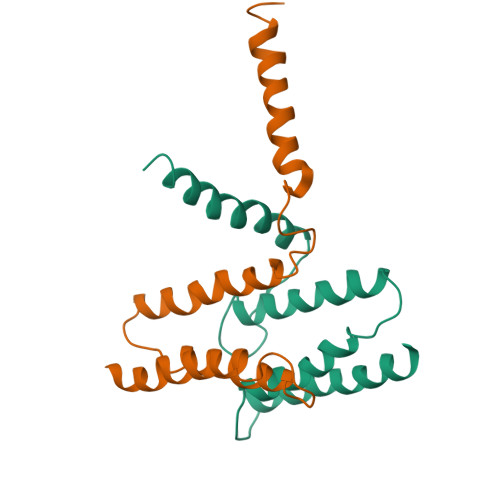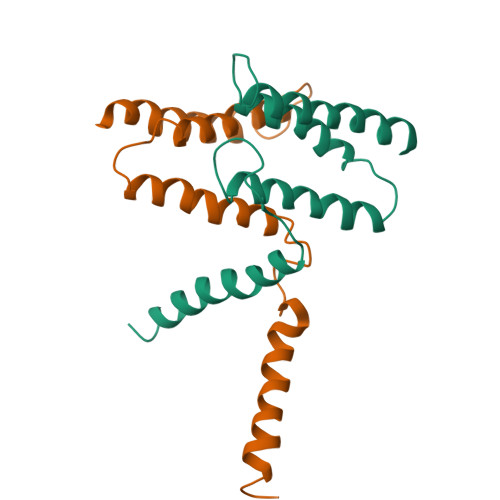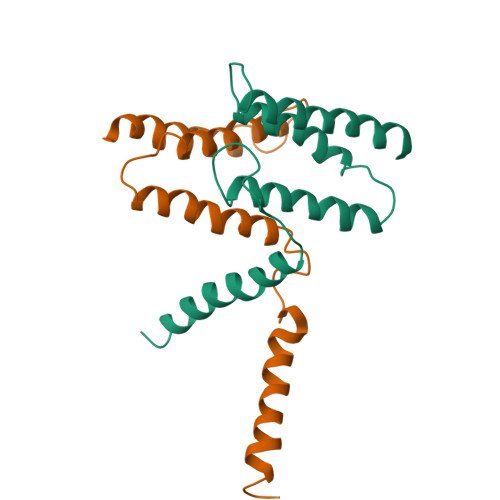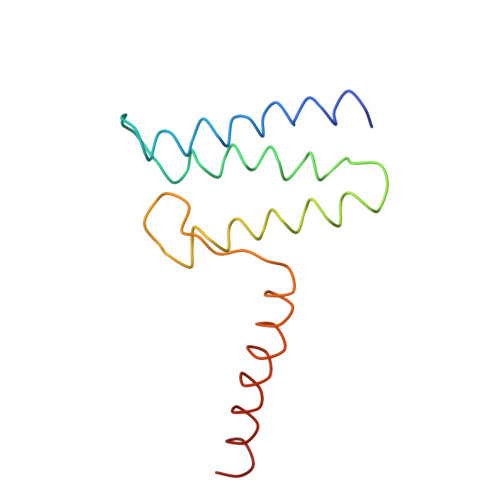X-ray structure of EmrE supports dual topology model.
Chen, Y.J., Pornillos, O., Lieu, S., Ma, C., Chen, A.P., Chang, G.(2007) Proc Natl Acad Sci U S A 104: 18999-19004
- PubMed: 18024586
- DOI: https://doi.org/10.1073/pnas.0709387104
- Primary Citation of Related Structures:
3B5D, 3B61, 3B62 - PubMed Abstract:
EmrE, a multidrug transporter from Escherichia coli, functions as a homodimer of a small four-transmembrane protein. The membrane insertion topology of the two monomers is controversial. Although the EmrE protein was reported to have a unique orientation in the membrane, models based on electron microscopy and now defunct x-ray structures, as well as recent biochemical studies, posit an antiparallel dimer. We have now reanalyzed our x-ray data on EmrE. The corrected structures in complex with a transport substrate are highly similar to the electron microscopy structure. The first three transmembrane helices from each monomer surround the substrate binding chamber, whereas the fourth helices participate only in dimer formation. Selenomethionine markers clearly indicate an antiparallel orientation for the monomers, supporting a "dual topology" model.
Organizational Affiliation:
Department of Molecular Biology, The Scripps Research Institute, 10550 North Torrey Pines Road, CB-105, La Jolla, CA 92037, USA.








